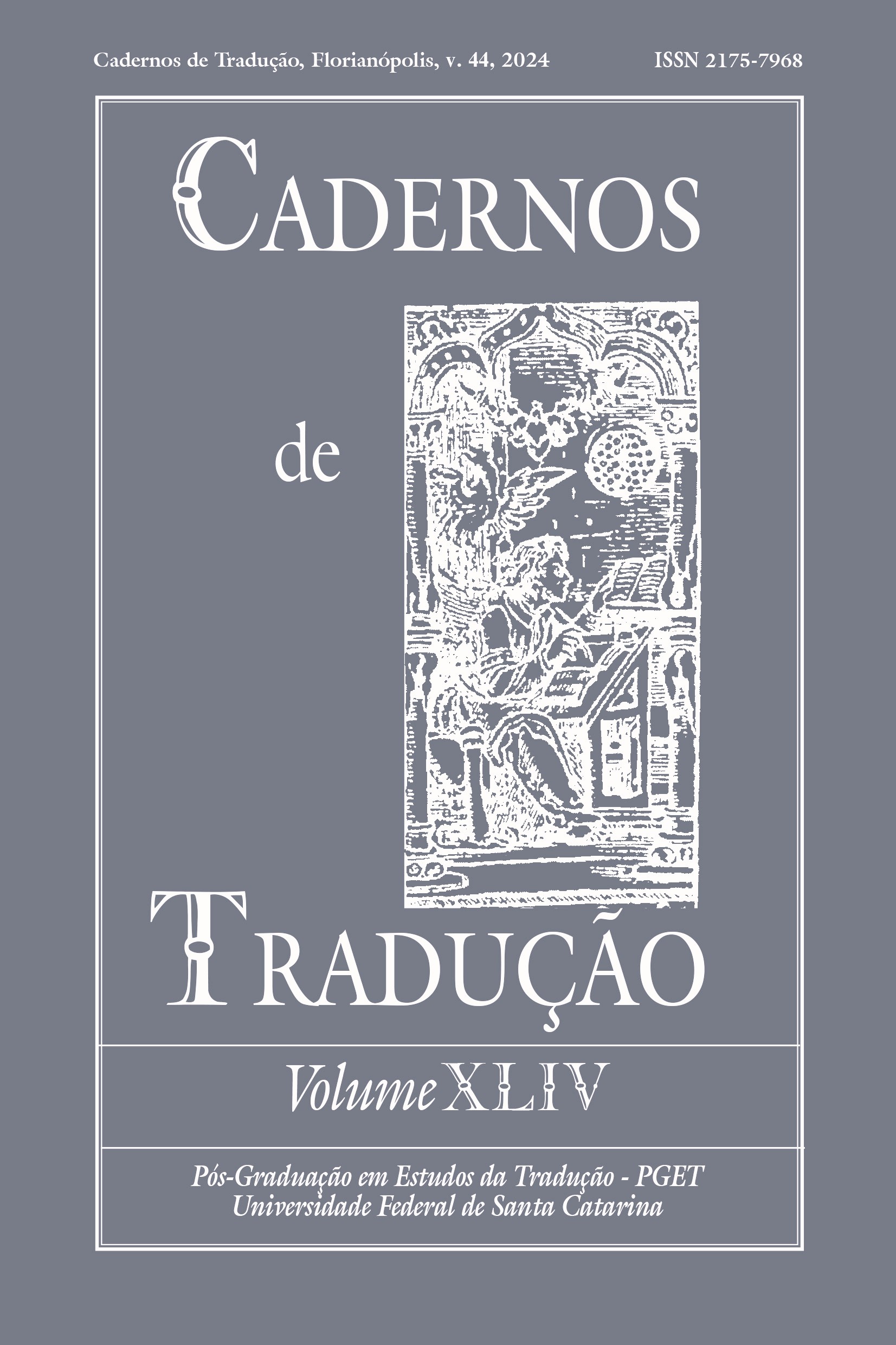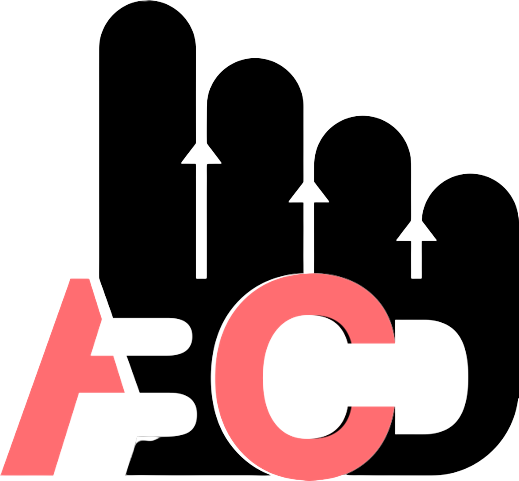Exploración de los procesos cognitivos en la postedición especializada de textos: un enfoque de métodos mixtos que integra protocolos de seguimiento ocular y verbalización
DOI:
https://doi.org/10.5007/2175-7968.2024.e95843Palavras-chave:
posedición, Unidades Terminológicas (UTs), seguimiento ocular, protocolo retrospectivo, proceso de comprensiónResumo
La demanda actual de traducción especializada, los avances tecnológicos, el uso de herramientas y los plazos de entrega han influido en el producto y el proceso, fomentando los servicios de posedición. La posedición se refiere a los ajustes realizados a los productos arrojados por un traductor automático (Alves et al., 2016). Por consiguiente, ha surgido un interés por estudiar la calidad del producto y cuestiones lingüísticas como aspectos sintácticos, morfosintácticos y semánticos (Popovic et al., 2014; Koponen et al., 2012; Temnikova, 2010), sin investigar los procesos cognitivos implicados en la lectura para con fines de posedición. El objetivo de este artículo es describir la comprensión de un texto especializado con fines de posedición. La recolección de la información se realizó mediante seguimiento ocular y protocolo retrospectivo, a tres traductores. Los participantes poseditaron un texto de 227 palabras del ámbito de salud. Los resultados mostraron un involucramiento de la atención y la memoria de trabajo (Cowan, 1999, 2005, 2021) durante el procesamiento de Unidades Terminológicas (UTs). Además, factores como el campo de conocimiento, la experiencia y el nivel de escolaridad también podrían afectar el proceso de posedición.
Referências
Alves, F., Szpak, K. S., Gonçalves, J. L., Sekino, K., Aquino, M., Araújo e Castro, R., Koglin, A., Fonseca, N. B., & Mesa-Lao, B. (2016). Investigating Cognitive Effort in Post-Editing: A Relevance-Theoretical Approach. In S. Hansen-Schirra & S. Grucza (Eds.), Eyetracking and Applied Linguistics (pp. 109–145). Language Science Press. https://doi.org/10.17169/langsci.b108.296
Alves, F., & Hurtado Albir, A. (2017). Evolution, Challenges, and Perspectives for Research on Cognitive Aspects of Translation. In J. W. Schwieter & A. Ferreira (Eds.), The Handbook of Translation and Cognition (pp. 537–554). John Wiley & Sons.
Bailer, C., & Tomitch, L. M. B. (2020). Leitura no cérebro: processos no nível da palavra e da sentença. Cadernos de Tradução, 40(2), 149–184. https://doi.org/10.5007/2175-7968.2020v40nesp2p149
Cabré, M. T. (1999). La terminología. Representación y comunicación. Una teoría base comunicativa y otros artículos. Universitat Pompeu Fabra.
Cabré, M. T. (2000). La enseñanza de la terminología en España: problemas y propuestas. Hermēneus: Revista de Traducción e Interpretación, 2, 41–94.
Cabré, M. T. (2007). Constituir un corpus de textos de especialidad: condiciones y posibilidades. In M. Ballard & C. Pineira-Tresmontant (Eds.), Les corpus en linguistique et en traductologie (pp. 89-106). Artois Presses Université.
Cabré, M. T., & Estopá, R. (2005). Unidades de conocimiento especializado: caracterización y tipología. In M. T. Cabré & C. Bach (Eds.), Coneixement, llenguatge i discurs especialitzat (pp. 78–83). Universitat Pompeu Fabra.
Cárcamo, B. (2018). Modelos de la Memoria de Trabajo de Baddeley & Cowan: una revisión bibliográfica comparativa. Revista Chilena de Neuropsicología, 13(1), 6–10. http://dx.doi.org/10.5839/rcnp.2018.13.01.02
Carl, M., Dragsted, B., Elming, J., Hardt, D., & Jakobsen, A. L. (2011). The Process of Post-Editing: A Pilot Study. In B. Sharp, M. Zock, M. Carl & A. L. Jakobsen (Eds.), Proceedings of the 8th International NLPCS Workshop. Special Theme: Human-Machine Interaction in Translation (pp. 131–142). Samfundslitteratur.
Carl, M., Gutermuth, S., & Hansen-Schirra, S. (2015). Post-editing Machine Translation: Efficiency, Strategies and Revision Processes in Professional Translation Settings. In A. Ferreira & J. Schwieter (Eds.), Psycholinguistic and Cognitive Inquiries into Translation and Interpreting (pp. 145–174). John Benjamins Publishing Company.
Cowan, N. (1999). An Embedded-processes Model of Working Memory. In A. Miyake & P. Shah (Eds.), Models of Working Memory: Mechanisms of Active Maintenance and Executive Control (pp. 62–101). Cambridge University Press.
Cowan, N. (2005). Working Memory Capacity. Psychology Press.
Cowan, N., Candice, C. M., & Naveh-Benjamin, M. (2021). An Embedded-processes Approach to Working Memory. How is it Distinct from Other Approaches and to what Ends? In R. Logie, V. Camos & N. Cowan (Eds.), Working Memory. State of the Science (pp. 44–84). Oxford University Press. https://doi.org/10.1093/oso/9780198842286.003.0003
Daems, J., Vandepitte, S., Hartsuiker, R. J., & Macken, L. (2017). Identifying the Machine Translation Error Types with the Greatest Impact on Post-editing Effort. Frontiers Psychology, 8(1282), 1–15. https://doi.org/10.3389/fpsyg.2017.01282
Danks, J. H., & Griffin, J. (1997). Reading and Translation. In J. H. Danks, G. M. Shreve, S. B. Fountain & M. K. McBeath (Eds.), Cognitive Processes in Translation and Interpreting (pp. 161–175). Sage.
De Gibert, O., & Aranberri, N. (2019). Estrategia multidimensional para la selección de candidatos de traducción automática para post-edición. Linguamática, 11(2), 3–16. https://doi.org/10.21814/lm.11.2.277
Ferraresi, A. (2019). How specialized (or popularized)? Terminological Density as a Clue to Text Specialization in the Domain of Food Safety. Lingue e Linguaggii, 29, 17–39. https://doi.org/10.1285/i22390359v29p17
Fonseca, N. B. de L., Nunes, L. P., & Vieira, M. R. (2024). Esforço temporal em processos de escrita e de pós-edição acadêmicas na área de educação. Cadernos de Tradução, 44(1), 1–18. https://doi.org/10.5007/2175-7968.2024.e96629
García, I. (2012). A Brief History of Post-Editing and of Research on Post-Editing. In A. Pym & R. A. Assis (Eds.), Special Issue on Translation Studies (pp. 291–312). Várzea da Rainha Impressores, S. A.
Gernsbacher, M. A. (1990). Language Comprehension as Structure Building. Lawrence Erlbaum Associates, Inc.
Giraldo Ortiz, J. J. (2008). Análisis y descripción de las siglas en el discurso especializado de genoma humano y medio ambiente. [Doctoral thesis]. Universitat Pompeu Fabra. https://repositori.upf.edu/handle/10230/11792?show=full
Giraldo Ortiz, J. J. (2012). Caracterización de las siglas especializadas: el caso de los ámbitos de genoma humano y medio ambiente. Lenguaje, 40(2), 507–532. https://doi.org/10.25100/lenguaje
Goldman, S. R., & Varma, S. (1995). CAPing the Construction-integration Model of Discourse Comprehension. In C. A. Weaver, S. Mannes & C. R. Fletcher (Eds.), Discourse Comprehension: Essays in Honor of Walter Kintsch (pp. 337–358). Lawrence Erlbaum Associates, Inc.
Goldman, S. R., Varma, S., & Coté, N. (1996). Extending Capacity-constrained Construction Integration: Toward "Smarter" and Flexible Models of Text Comprehension. In B. K. Britton & A. C. Graesser (Eds.), Models of Understanding Text (pp. 73–113). Lawrence Erlbaum Associates, Inc.
Gómez Romero, Y. A., Giraldo Ospina, D. L., Naranjo Ruiz, M., Pineda Rojas, J., & Suarez de la Torre, M. (2019). Terminología experimental y traducción especializada: un estudio sobre la distribución de la atención visual y la presión de tiempo. Terminàlia, 20, 20–29.
Hvelplund, K. T. (2014). Eye Tracking and the Translation Process: Reflections on the Analysis and Interpretation of Eye-Tracking Data. In R. Muñoz Martín (Ed.), Minding Translation (pp. 201–223). Universitat d’Alacant.
Just, M. A., & Carpenter, P. A. (1992). A Capacity Theory of Comprehension: Individual Differences in Working Memory. Psychological Review, 99(1), 122–149. https://doi.org/10.1037/0033-295X.99.1.122
Kasperavičienė, R., Motiejūnienė, J., & Patašienė, I. (2020). Avaliação da qualidade da produção de tradução automática: abordagem de avaliação cognitiva em um experimento com rastreamento ocular. Texto Livre, 13(2), 271–285. https://doi.org/10.35699/1983-3652.2020.24399
Kintsch, W., & Van Dijk, T. A. (1978). Toward a Model of Text Comprehension and Production. Psychological Review, 85(5), 363–394. https://doi.org/10.1037/0033-295X.85.5.363
Kintsch, W. (1988). The Role of Knowledge in Discourse Comprehension: A Construction Integration Model. Psychological Review, 95(2), 163–182. https://doi.org/10.1037/0033-295X.95.2.163
Kiyonaga, A., & Egner, T. (2013). Working memory as Internal Attention: Toward an Integrative Account of Internal and External Selection Processes. Psychonomic Bulletin & Review, 20(2), 228–242. https://doi.org/10.3758/s13423-012-0359-y
Koglin, A., Moura, W., & Silveira, J. (2020). Uma investigação empírica do esforço cognitivo despendido para pós-editar metáforas traduzidas automaticamente em comparação com a tradução manual de metáforas. Calestroscópio, 8, 55–76. https://doi.org/10.58967/caletroscopio.v8.n.2020.4573
Koponen, M., Aziz, W., Ramos, L., & Specia, L. (2012). Post-editing Time as a Measure of Cognitive Effort. In S. O’Brien, M. Simard, & L. Specia (Eds.), Proceedings of the AMTA 2012 Workshop on Post-editing Technology and Practice (pp. 11–20). Association for Machine Translation in the Americas.
Koponen, M., & Salmi, L. (2017). Post-editing Quality: Analysing the Correctness and Necessity of Post-editor Corrections. Linguistica Antverpiensia, New Series: Themes in Translation Studies, 16, 137–148. https://doi.org/10.52034/lanstts.v16i0.439
Korpal, P. (2015). Eye-tracking in Translation and Interpreting Studies: The Growing Popularity and Methodological Problems. In L. Bogucki & M. Deckert (Eds.), Accessing Audiovisual Translation (pp. 199–212). Peter Lang.
Krings, H. P. (2001) Repairing Texts: Empirical Investigations of Machine Translation Post-editing Process. The Kent State University Press.
Lacruz, I. (2017). Cognitive Effort in Translation, Editing, and Post-Editing. In J. Schwieter & A. Ferreira (Eds.), Handbook of Translation and Cognition (pp. 386–401). Wiley & Sons.
Muñoz Martín, R. (2008). Apuntes para una traductología cognitiva. In L. Pegenaute, J. A. Decesaris, M. Tricás & E. Bernal (Eds.), Actas del III Congreso Internacional de la Asociación Ibérica de Estudios de Traducción e Interpretación. La traducción del futuro: mediación lingüístca y cultural en el siglo XXI (pp. 65–75). PPU.
Muñoz Martín, R. (2017). Looking Toward the Future of Cognitive Translation Studies. In J. Schwieter & A. Ferreira (Eds.), The Handbook of Translation and Cognition (pp. 555–572). Wiley Blackwell.
Peña, A. A. (2023). Challenging Machine Translation Engines: Some Spanish-English Linguistic Problems put to the Test. Cadernos de Tradução, 43, 1–26. https://doi.org/10.5007/2175-7968.2023.e85397
Popovic, M., Lommel, A., Burchardt, A., Avramidis, E., & Uszkoreit, H. (2014). Relations between Different Types of Post-Editing Operations, Cognitive Effort, and Temporal Effort. In M. Cettolo, M. Federico, L. Specia & A. Way (Eds.), Proceedings of the 17th Annual Conference of the European Association for Machine Translation (pp. 191–198). European Association for Machine Translation.
Prieto, J. A. (2008). Información Gráfica y grados de especialidad en el discurso científico-técnico: un estudio de corpus. [Doctoral thesis]. Universidad de Granada. https://digibug.ugr.es/handle/10481/1895
Rayner, K. (1998). Eye movements in reading and information processing: 20 years of research. Psychological Bulletin, 124(3), 372–422. https://doi.org/10.1037/0033-2909.124.3.372
Rayner, K., & McConkie, G. W. (1977). Perceptual Processes in Reading: The perceptual Spans. In A. S. Reber & D. L. Scarborough (Eds.), Toward a Psychology of Reading: The Proceedings of the CUNY Conferences (pp. 183–206). Lawrence Erlbaum.
Snover, M., Dorr, B., Schwartz, R., Micciulla, L., & Makhoul, J. (2006). A Study of Translation Edit Rate with Targeted Human Annotation. In M. Cettolo, M. Federico, L. Specia & A. Way (Eds.), Proceedings of the 7th Conference of the Association for Machine Translation of the Americas: Visions for the Future of Machine Translation (pp. 223–231.). Association for Machine Translation in the Americas.
Specia, L., & Farzindar, A. (2010). Estimating Machine Translation Post-Editing Effort with HTER. In V. Zhechev (Ed.), Proceedings of the Second Joint EM+/CNGL Workshop Bringing MT to the User: Research on Integrating MT in the Translation Industry (JEC 10) (pp. 33–43). Association for Machine Translation in the Americas.
Temnikova I. (2010). Cognitive Evaluation Approach for a Controlled Language PostEditing Experiment. In Proceedings of the International Conference on Language Resources and Evaluation (pp. 17–23). European Language Resources Association.
Teneche Sánchez, M. F. (2014). Evaluación de tres traductores automáticos en línea cuando traducen unidades especializadas eventivas (Español-Inglés). [Master’s dissertation]. Universidad Autónoma de Manizales. https://repositorio.autonoma.edu.co/handle/11182/90
Zagermann, J., Pfeil, U., & Reiterer, H. (2016). Measuring Cognitive Load using Eye Tracking Technology in Visual Computing. In M. Sedlmair, P. Isenberg, T. Isenberg, N. Mahyar, & H. Lam (Eds.), BELIV '16: Proceedings of the Sixth Workshop on Beyond Time and Errors on Novel Evaluation Methods for Visualization (pp. 78–85). Association for Computing Machinery.
Downloads
Publicado
Como Citar
Edição
Seção
Licença
Copyright (c) 2024 Cadernos de Tradução

Este trabalho está licenciado sob uma licença Creative Commons Attribution 4.0 International License.
Autores têm autorização para assumir contratos adicionais separadamente, para distribuição não exclusiva da versão do trabalho publicada nesta revista (ex.: publicar em repositório institucional ou como capítulo de livro, com reconhecimento de autoria e publicação inicial nesta revista).





















































